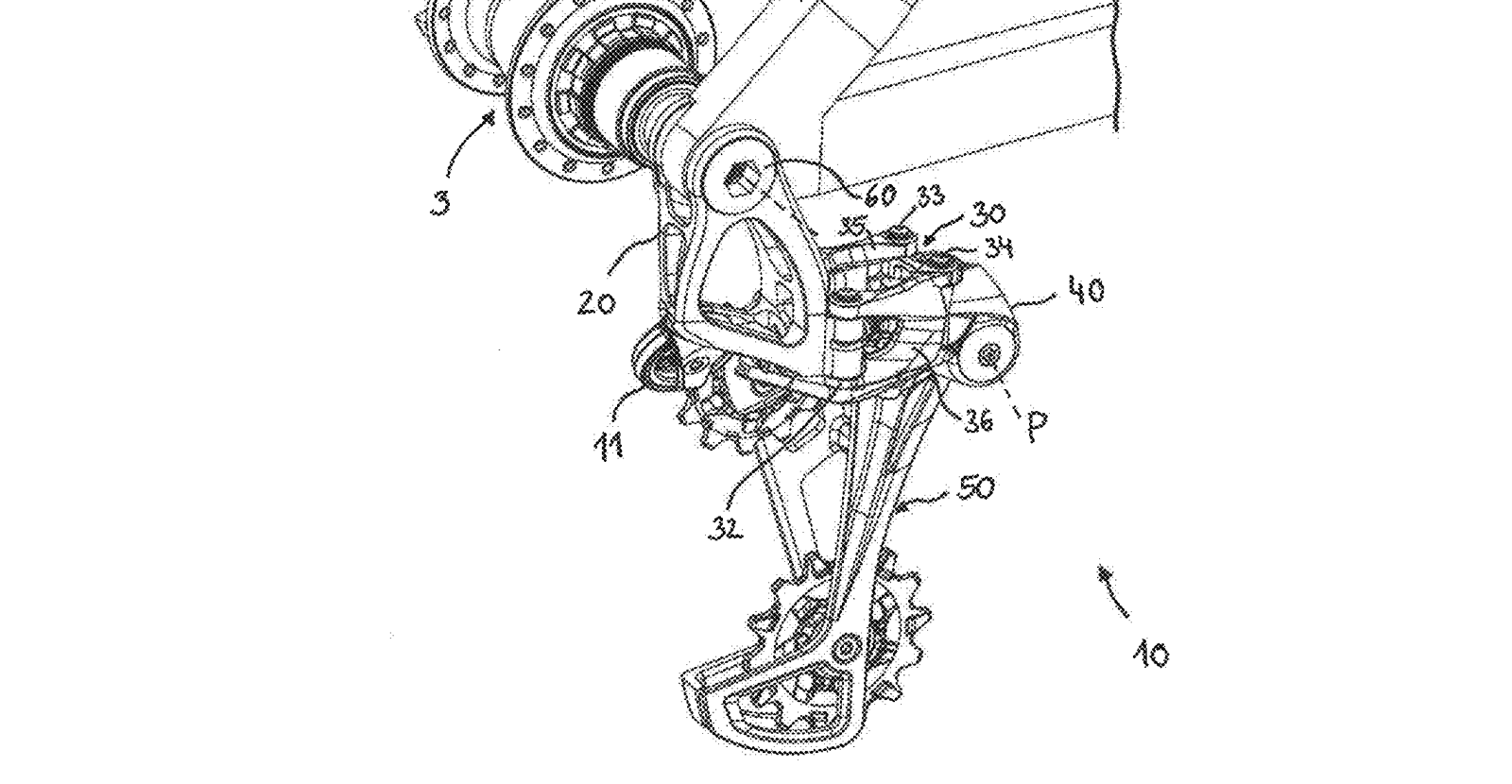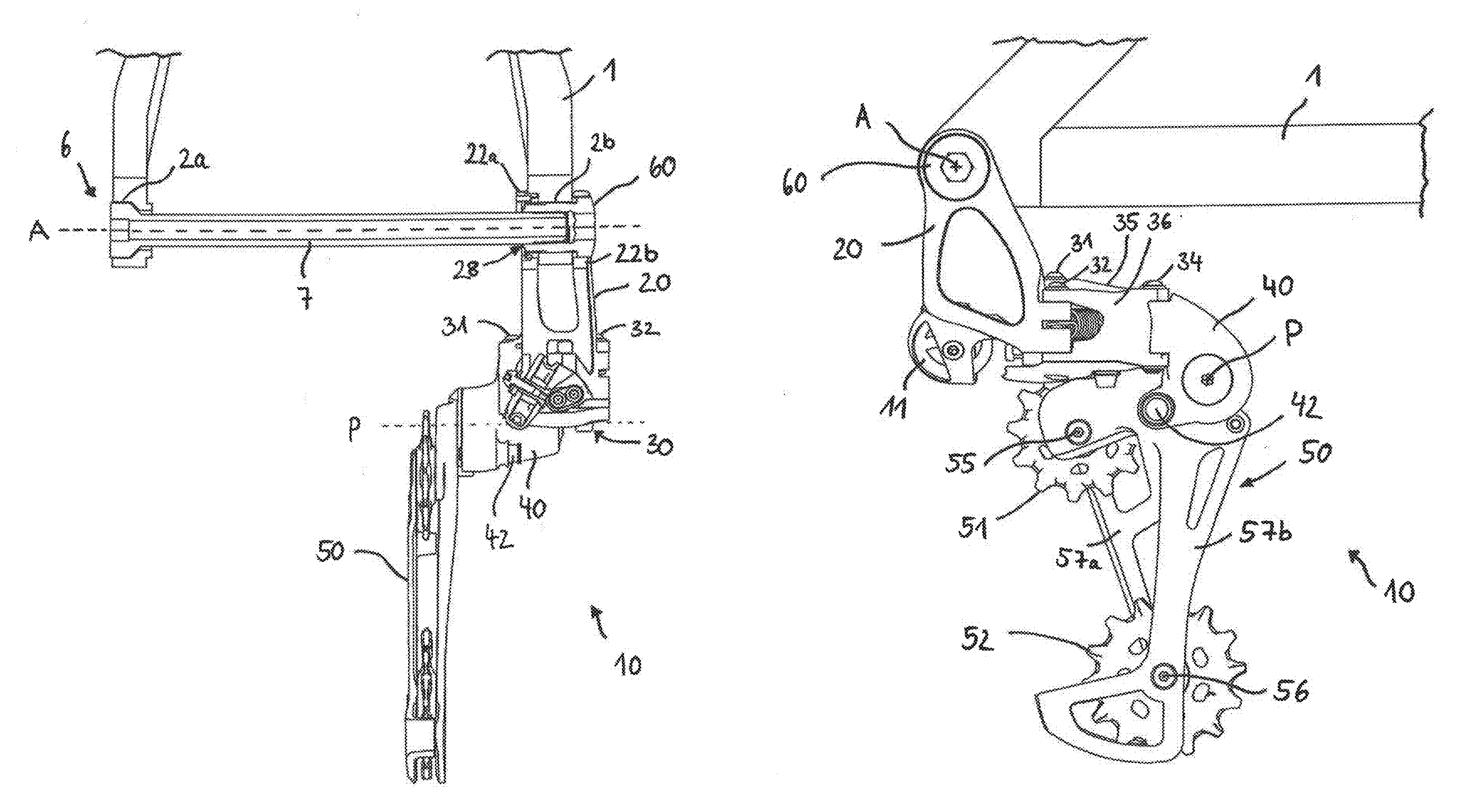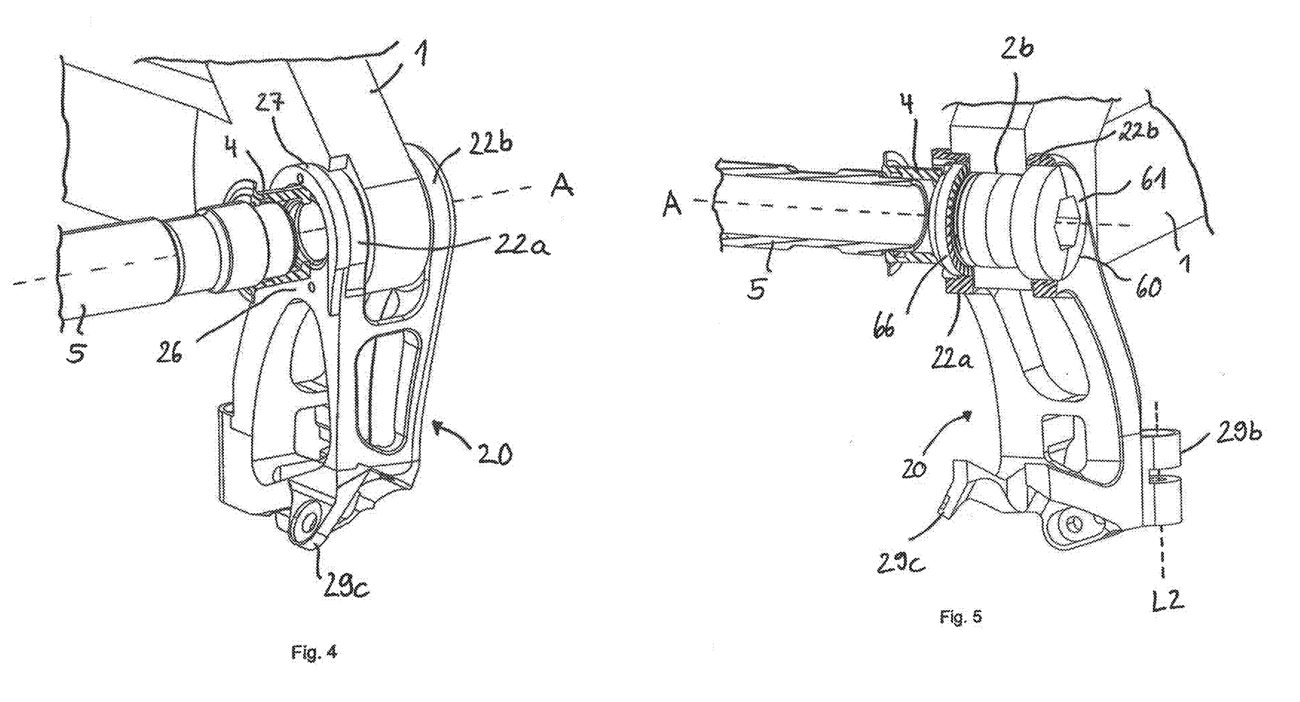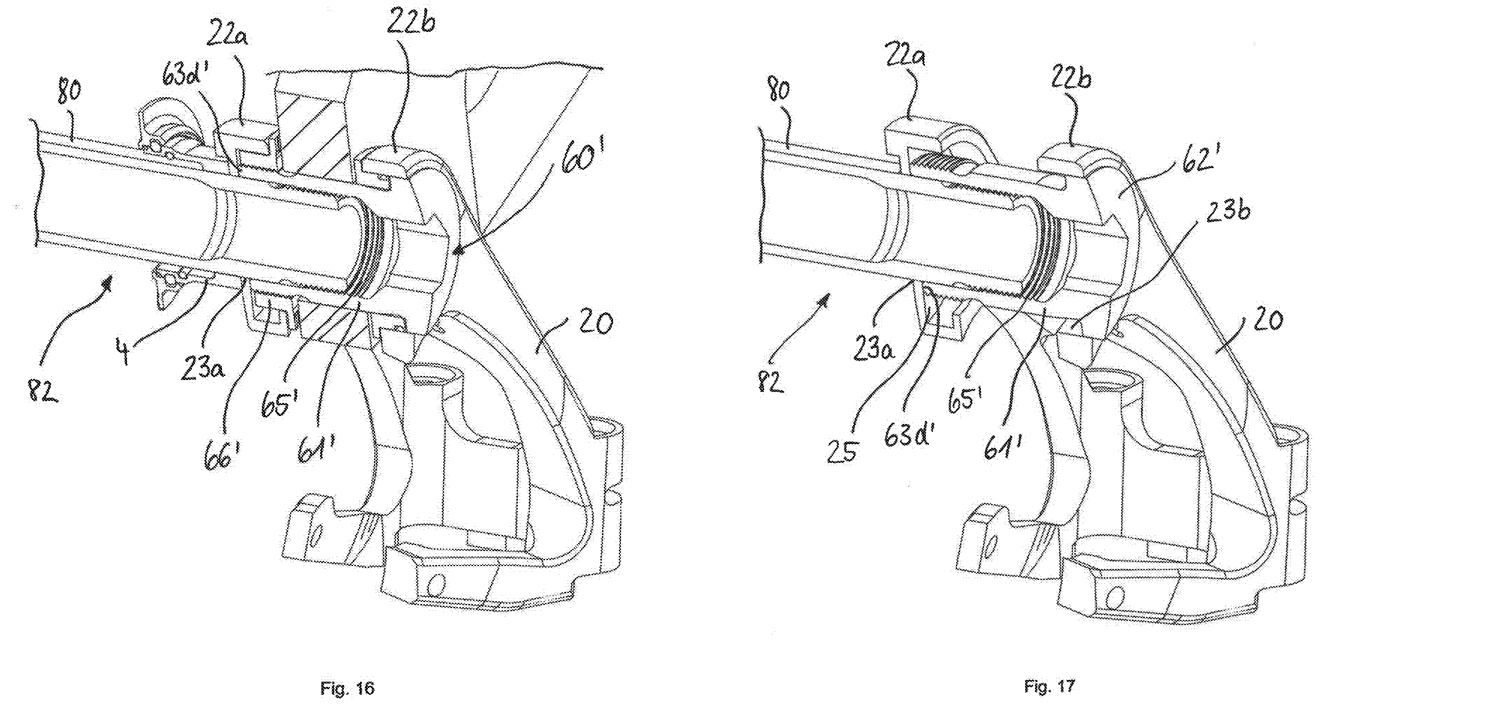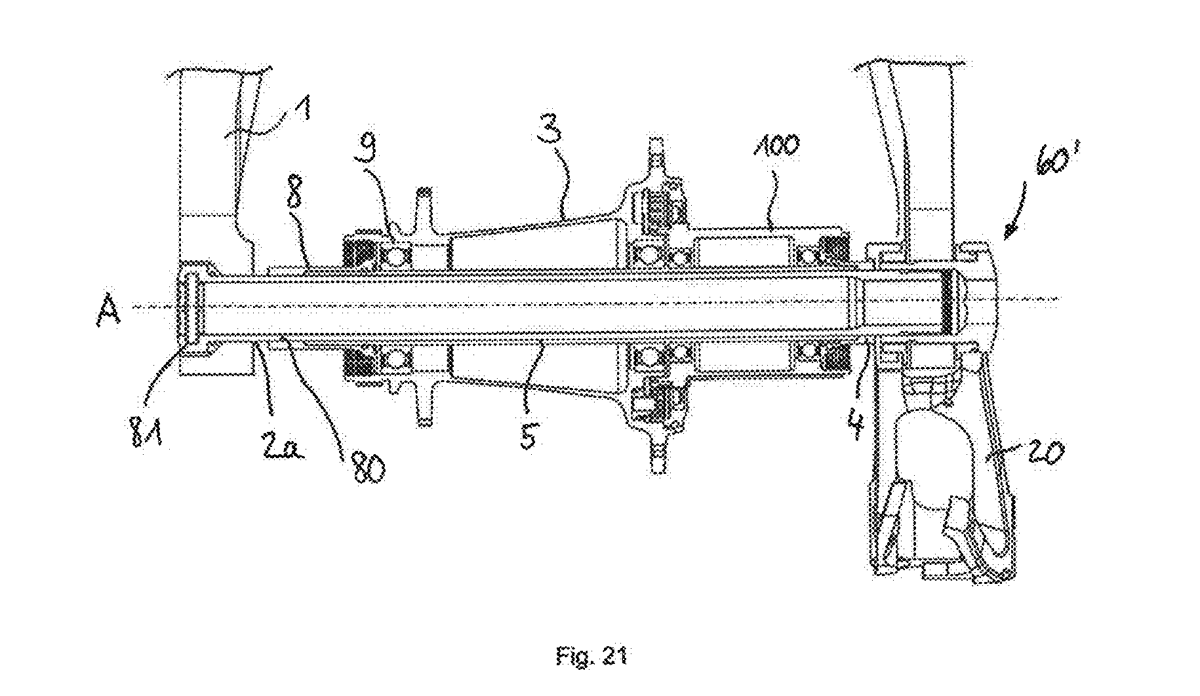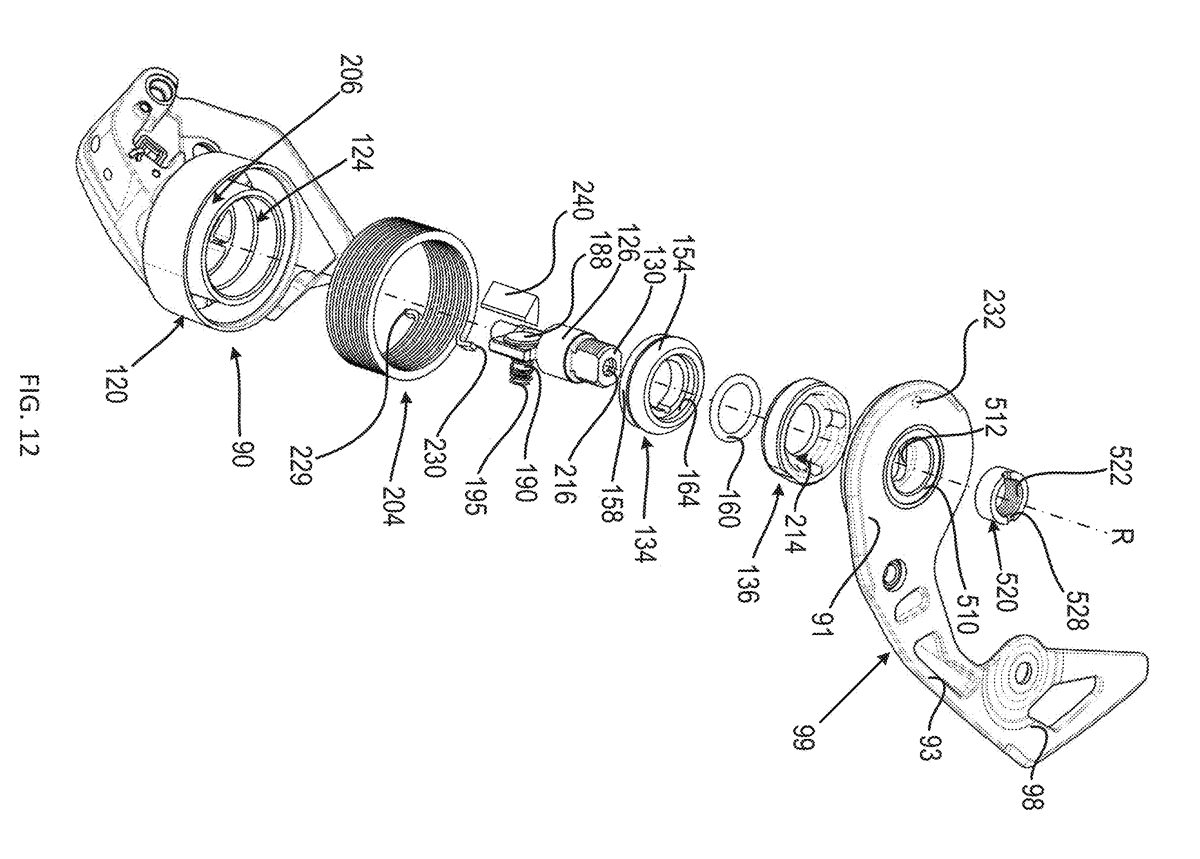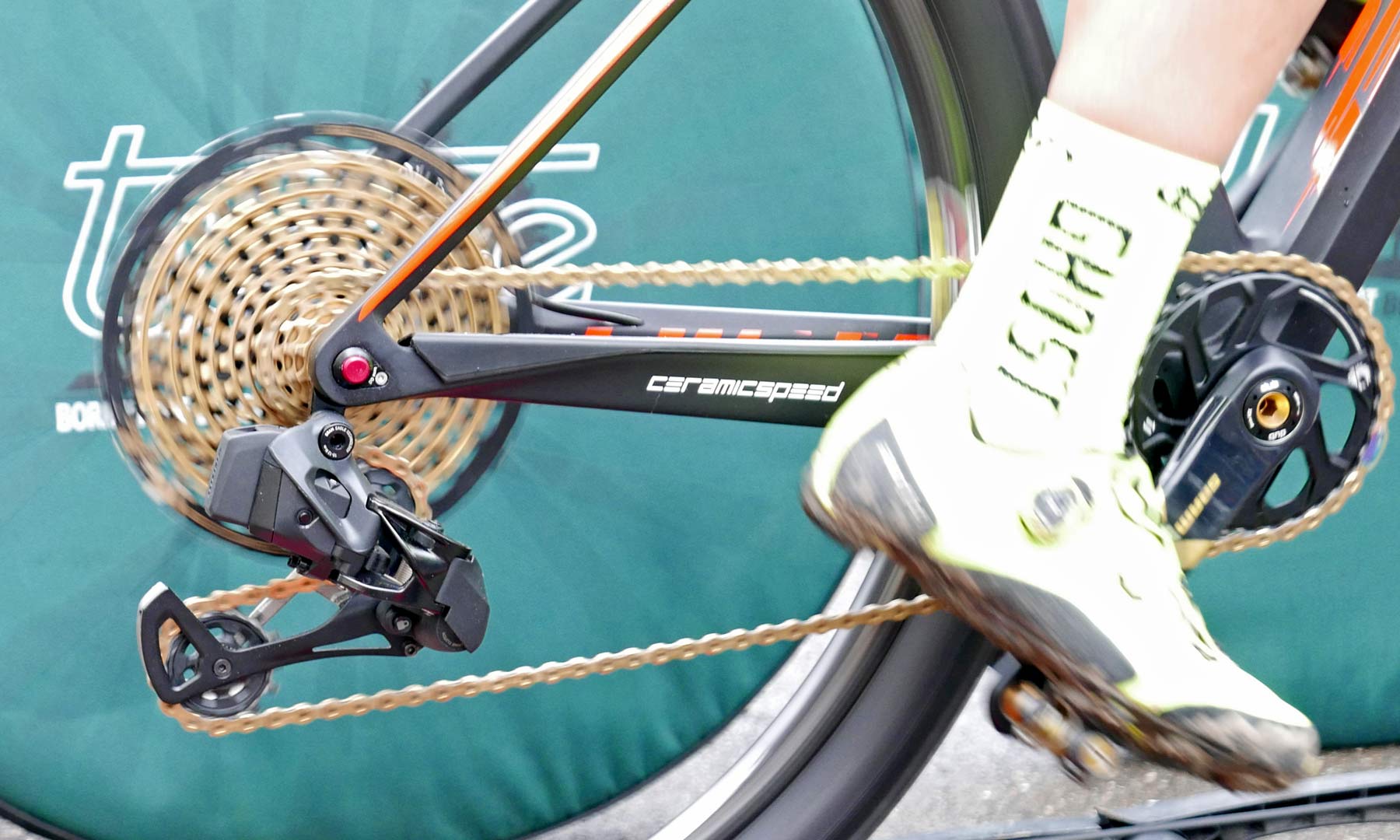As cassettes have added teeth and diameter, the forces on the derailleur have multiplied while at the same time we’re asking it to behave ever more precisely. More cogs typically means less space between them, so the movements of the derailleur must be very well defined, and its tolerances tight. The other variable is the frame itself, and its dropouts. Those can vary from brand to brand, model to model, introducing more complexity when trying to design a shifting system independent of the frame. With this in mind, it looks like SRAM is exploring new ways to enhance shifting performance by integrating the rear derailleur directly into the dropout…
The premise of the design is a base member (20) that replaces the traditional B-knuckle and sandwiches the frame. It also replaces the dropout and derailleur hanger as we know it by incorporating the thru axle’s female end. Basically, the thru axle threads directly into it, ensuring perfect alignment between the axle, hub, cassette and rear derailleur.
The other concern mentioned in their patent is “ghost shifting”, particularly for mountain bikes where a big, fast impact on the rear can shake the derailleur enough to cause it to momentarily shift without rider input. That’s because the parallelograms are obliquely angled, allowing vertical forces to influence them. If you notice this design, the parallelograms are parallel to the ground, so vertical forces can’t impact them.
This is very similar to the current Eagle rear derailleurs, which move in a linear path and use the offset upper pulley to handle the angle of the cassette. But here, the parallelograms themselves sit parallel to the ground, too, rather than angled downward. This could just be for the drawing, though.
As drawn, the base element (20) doubles as the dropout, which suggests SRAM will need buy in from the frame manufacturers to make this work. And then Shimano would need to follow with a compatible rear derailleur design. The patent mentions that this base element (20), aka “B knuckle”, could be made of metal or composite.
Multiple variations of the design show different bolt systems attaching the base to the frame, but all use some manner of a larger bolt (60/61/62) threading into a nut (66) or possible the base itself. The thru axle would then thread into that bolt. Because of this, it could easily accommodate any thru axle standard simply by switching out the mounting bolt. They mention a quasi-floating design that’s able to accommodate frame intolerances while still keeping the base perfectly aligned with the axle.
The benefits of such a design include:
- Perfect alignment of the derailleur with the cassette
- Stiffer derailleurs for more precise shifting
- Easier installation and setup
Could this mean new mountain bike standards? New features?
The patent spends a fair number of words describing the benefit of a 15mm thru axle. Currently, all bicycle rear thru axles are 12mm in diameter, but this design allows for various diameter axles to be used by swapping the mounting bolts. Theoretically, it mentions how 15mm thru axles are much stronger, which is particularly good for e-MTBs. But, it also mentions that you could have thru axles with various wall thicknesses from a 1mm “SL” version up to 2mm e-bike versions, allowing the same hub to be used on any type of bike, relying on the stronger axle to handle the extra loads.
They also mention that a battery could be tucked inside the base member, which would both protect it and keep the system looking extremely sleek. And they mention eliminating limit screws. To do that, the derailleur could have an element that contacted the largest cog and prevented the derailleur from shifting further inboard (toward the hub), and a limit stop that could contact the base element to prevent overshooting outboard (away from the hub).
It’s important to note that this patent doesn’t guarantee any of this will ever make it to production. And that SRAM mentions that some or all of this design may be used independently of the other aspects. For example, that they may use just one single arm on the base element rather than sandwiching the frame between it. Or that the parallelograms may still be angled downward rather than flat. Since we’re not seeing any of these features on the prototype eTap 12-speed stuff floating around, we’re guessing it’ll be on MTB products first, if ever.
Hydraulically damped derailleur clutches
Another thing rear derailleurs are tasked with is keeping the chain in check over rough terrain. The advent of clutched rear derailleurs has made this job much easier on them, but it brought about it’s own set of issues. Namely, increased force required to shift up the cassette (to a larger cog). Pulling that cable means pulling against the force of the clutch. Make the clutch weaker and you get easier shifting, but less effective chain management. And vice versa. (If you don’t believe this impacts shifting effort, spin around with your Shimano clutch disengaged and shift a bunch. Then engage it and shift a bunch. You should be able to feel the difference.)
Until now, it’s been an all or nothing proposition. Choose between easier shifting and less chain control, or firmer shifts with less chain slap. But SRAM has a proposed solution with this hydraulically damped derailleur clutch.

Traditional derailleur clutches use friction to prevent floppy chain guides. The problem with that is the friction is there all the time, at any speed. This patent changes from physical friction to fluid flow control to change the dynamic. Simply put, it uses a hydraulic valve to control the rate at which the derailleur’s chain guide can rotate in the slackening direction. But it doesn’t restrict return speed.
Functionally, it works both the same and different. The same in that it prevents rapid slackening of the chain caused by fast movements from big hits. Different in that it can be tuned such that it has no impact on slow movements…like a shift.
The drawings are very complex, but the concept is simple. Basically a poppet valve (188) restricts flow in one direction (into the return chamber, 182) but allows full flow back the other (damping chamber, 184). A small valve spring (195) keeps the poppet closed against the flow ports (194) in the vane (180). A standard return spring (204) keeps the system tight. Not that you’d probably ever need to, but the force could be tuned by changing the fluid viscosity…if you can get it open. The language suggests it may be designed not to be serviced and could be permanently sealed.
Why use a hydraulic derailleur clutch?
The benefits go beyond improved shift feel. For electronic derailleurs, they’d use less power per shift, so the battery would last longer. The patent also suggests this hydraulic design could be lighter than a friction-based clutch. And the performance is more consistent. Lastly, it’s easier to manufacture and install, which improves efficiencies and profits if not potentially bringing down (slightly) the cost of components.
One concern would be fluid expansion. That’s a tiny bit of fluid to be cycling through a valve rapidly, potentially for hours at a time. Which means it could heat up and expand. So there will be a compensation chamber to allow for fluid expansion. And, that chamber could be pressurized, like a shock’s IFP, which would help prevent cavitation and, in the event of fluid or pressure loss, would ensure the clutch continued to work as designed.
The patent mentions this could be incorporated into any type of chain tensioner, with or without the actual gear changing capability. And, as with so many patents, there’s plenty of random stuff seemingly irrelevant to the technology being described. Like so:
…and we’ll leave you to noodle on that.
One last note… our sneaky spy shots of production-ready eTap Eagle wireless mountain bike derailleurs being raced at the XC World Cup this season did not use the direct mount hanger idea. But they certainly look to share the exact shape of that electronic hydraulically damped clutch derailleur illustration above. And the prototype derailleurs we saw being raced had, what in hindsight could be a 3D printed cover to disguise that new hydraulic clutch mechanism. Hmm…
